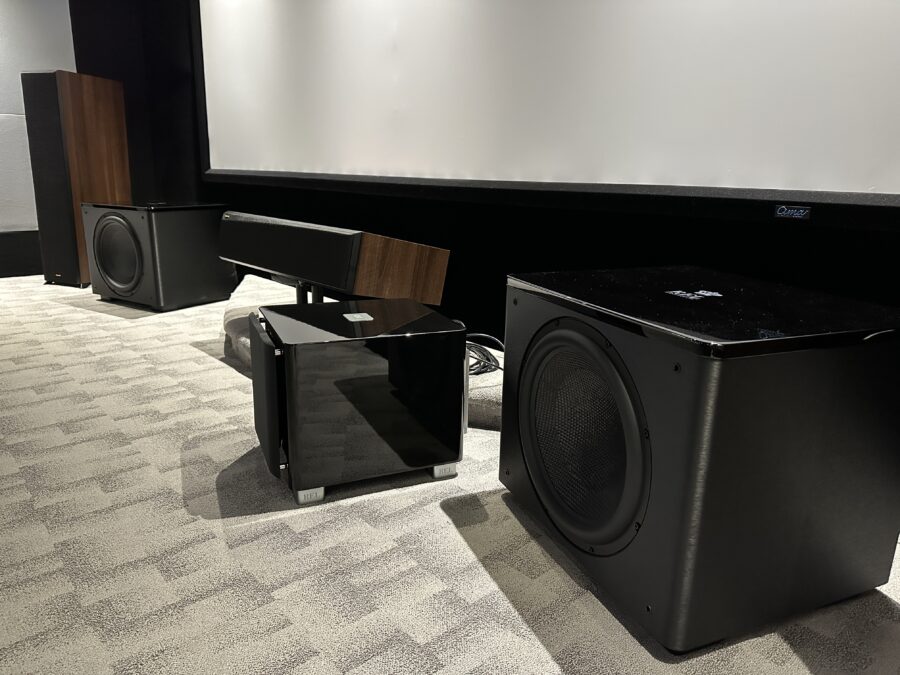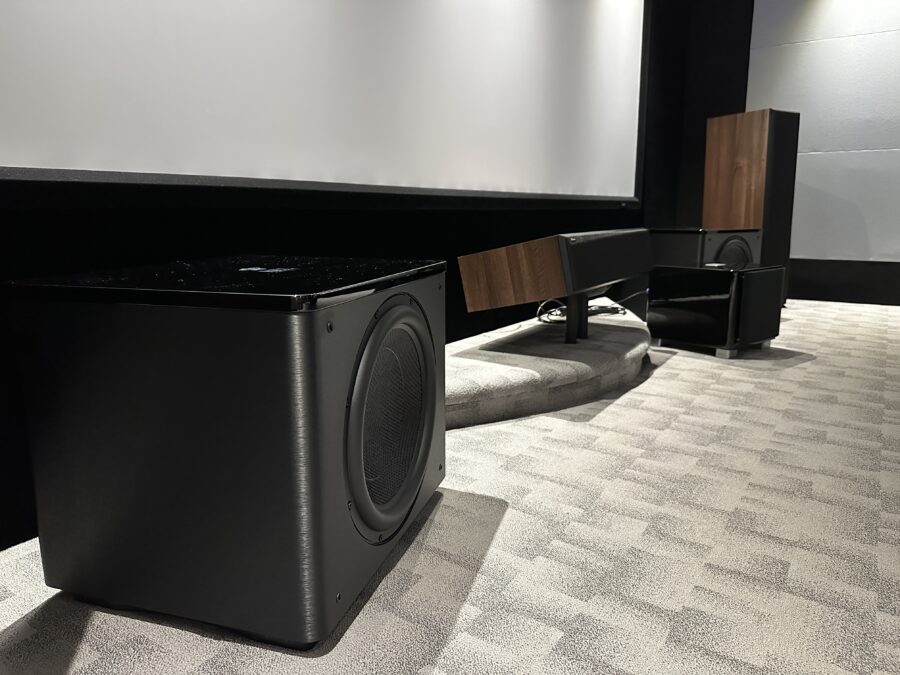Blog
For the Best Sound, Turn Here
How Bass Benefits HUGELY from Toe-In

Many people prefer order, symmetry, and objects like furniture to line up perfectly parallel with walls. While this may work for your couch, please don’t try this with your audio system if you want it to perform to anything like its maximum potential. Speakers, of course, benefit from toe-in; the precise amount needed is determined by careful listening and adjustment. Few owners realize, however, that subwoofers, too, benefit enormously from a significant degree of toe-in.
I was reminded of this while visiting a reviewer who is new to the REL experience. This reviewer, Erik Wesley, has one of the nicest, well-appointed home theatres I’ve encountered in a reviewer’s home. A medium-large room of around 290 square feet (28m) with the video supplied by a new JVC projector. On this evening, the audio system was a Klipsch setup across the front LCR, with his standard reference models in use for the side and rear surrounds. A Denon AVR 4800 supplied the electrons and did a fantastic job of replacing his Trinnov Processor (even if, as usual, it didn’t allow for extension below 40 Hz) as well as an expensive multi-channel amplifier that Erik had chosen a few days before. There’s a larger story to this (which I can share the details of in a subsequent blog post) that involved setting the system up as a REL HT/3D setup complete with (carefully) manually installed values for each channel, and performing a controlled A/B between the DIRAC room correction. It wasn’t even close. The manually installed values for each channel set significantly outperformed the DIRAC room correction set. Erik wrote a full article on this experience and we encourage you to read his thoughts on comparing manual set channels to DIRAC room correction.
The first thing I do, after arriving at a reviewer’s home, apart from getting to know the person, is to first hear the system as it stands. In this way, I can hear what the reviewer has been experiencing and also determine what we need to adjust to improve things. In this instance, I was pleasantly impressed to see the Klipsch speakers decently setup and, if anything, too far apart. This is rare since we find that most people set their speakers up as though it’s still 1970, with a distance between their inside edges around 4-5’ (1.3-1.5m), and usually pointed straight ahead. If you’re guilty of this, you’re leaving around 70% of the performance that you paid for at the sales counter. These speakers were some 12’ apart, a little more than the speakers could handle, but I’d rather have that and be able to trim it down slightly and focus the image. Again, I was pleasantly surprised that the reviewer had managed to pull together a coherent center image, many can’t do this. The evening was looking up!

Six minutes (and a few movements of the main L-R speakers) later, we had a huge, soundstage with far better bass and focus across the entire area with adjusted toe-in and carefully elevated rake. As usual, due to a slight unevenness in the floor, more rake was needed on one side than the other to compensate. Ahh, okay, now we were getting somewhere. We were there to help ensure that our HT/1510 Predator Home Theatre sub was going to deliver the goods. Oh my, and how it did! But not set up the way it was when we began; pointed straight ahead about 6’ off the center line of the screen. Three minutes later, slightly repositioned to locate the sub on a major acoustic node, but more importantly, toed-in almost (but not quite directly) at the primary listening seat, we had managed a miniature version of nirvana.
Let me stress this: If you want wildly dynamic, open-sounding, expressive ultra-deep bass, you simply must toe in your subwoofers to allow the fundamentals to be freed of room boundaries. The improvement was immediately apparent, and Erik, having good ears, heard the upgrade immediately. And, I heard what I’ve heard high-end reviewers on four continents say, “Wow, I never knew that subwoofers benefitted from careful precise dial-in and especially toe-in, that’s wild!”
We’ll save the larger insights, like what a proper, careful, manual dial-in of levels and delays (instead of using room tuning) can do for a system for another day. For now, apply what even few professional reviewers know: locate your theatre sub close to a corner (listening to EVERY small movement you make while doing so). Select micro locations that produce not just the most bass but the deepest, clearest bass, and make sure to toe (turn) your subwoofer inward toward the listening seat. Follow these simple steps, and you’ll be rewarded with a system that produces deep bass which sounds wildly more dynamic, more articulate, and just plain louder than it did only moments before.
Thank you for taking the time to read our latest blog. We hope it proved entertaining, perhaps thought provoking and educational. If you have any follow-up questions, ideas for articles, or a question specific to your systems, don’t hesitate to reach out to us at contactus@rel.net and we’ll do our best to get back to you within a few days.
Thanks again. We’ll keep doing our bit to bring our combined over 160 years of experience to making your pursuit of perfect sound a bit more enjoyable. And if you know a friend who might benefit from the guidance we shared, please pass this article along
– John Hunter, Chief Designer











